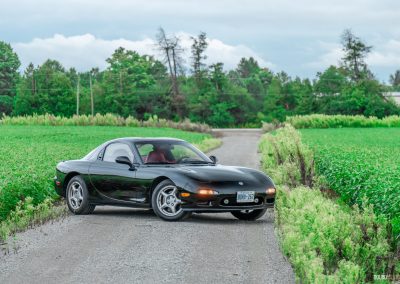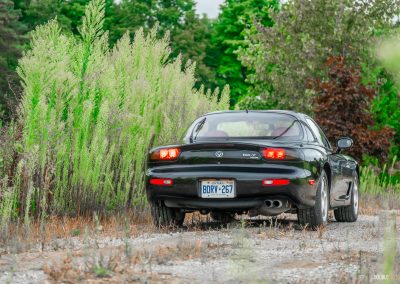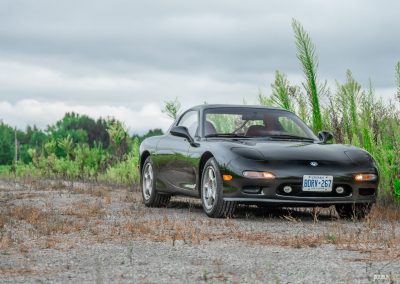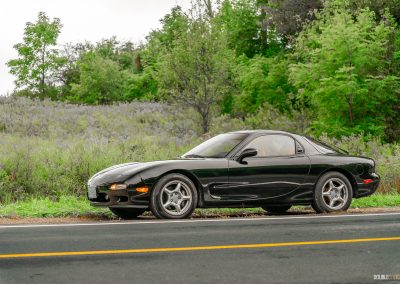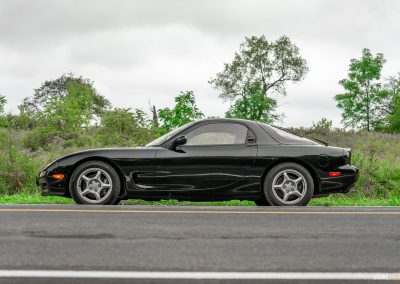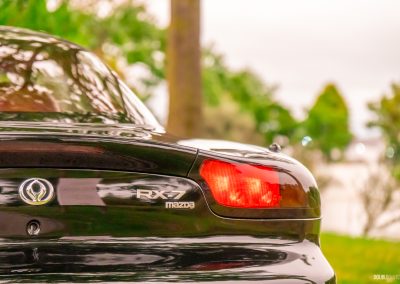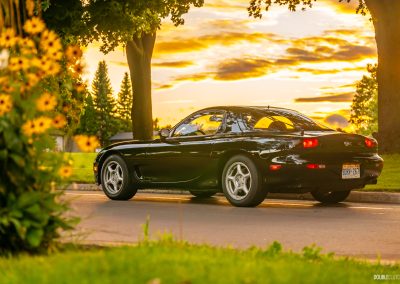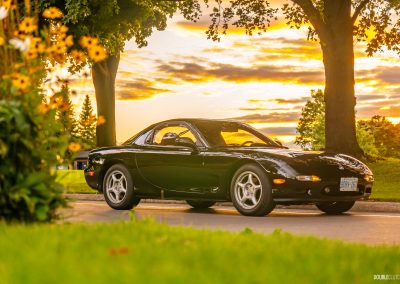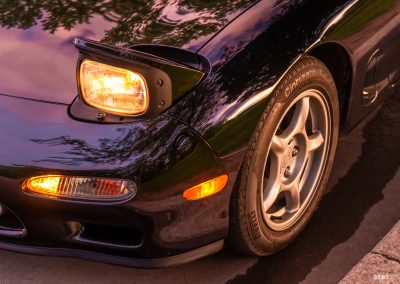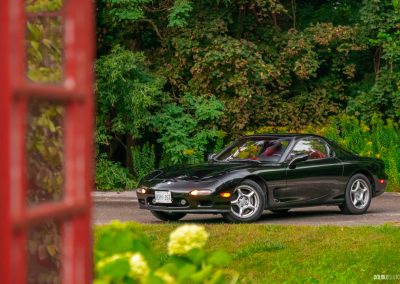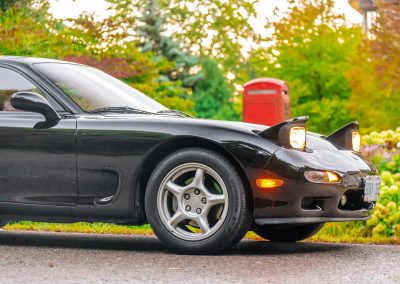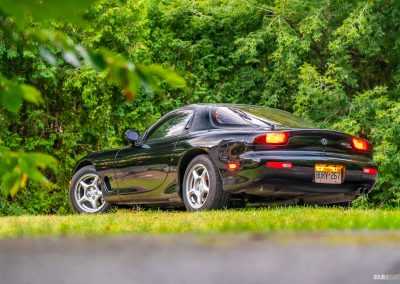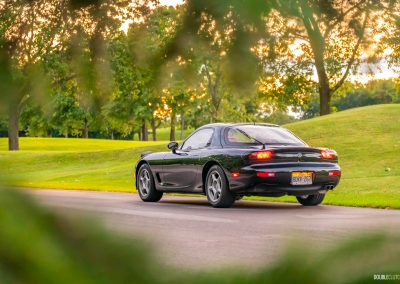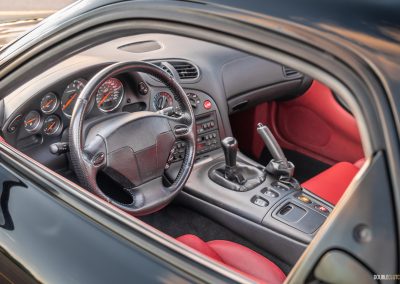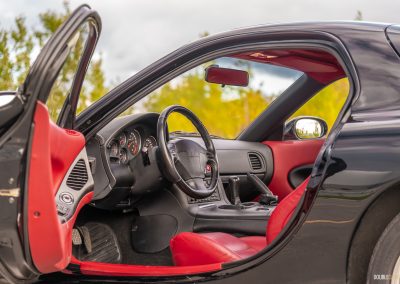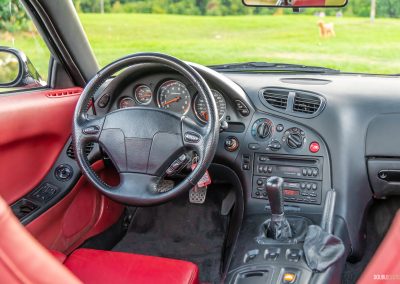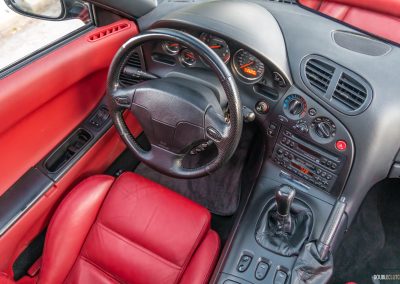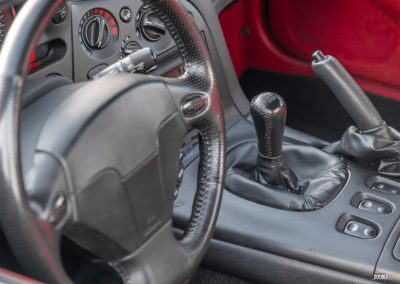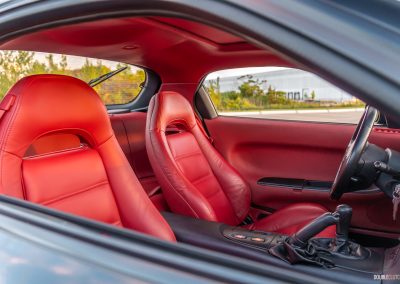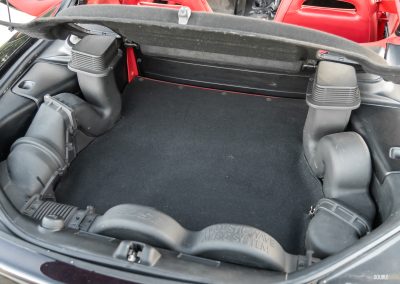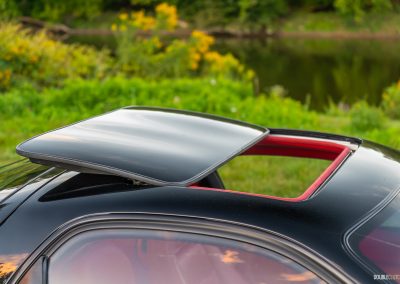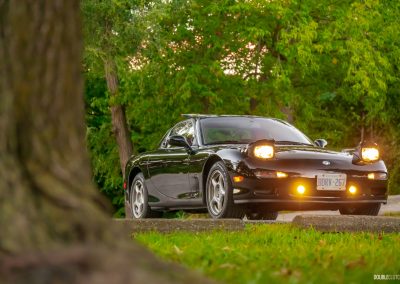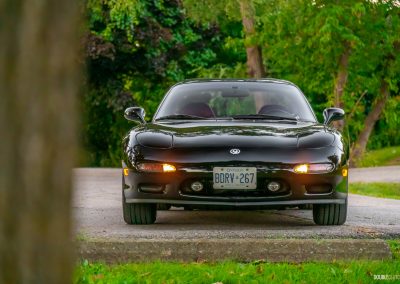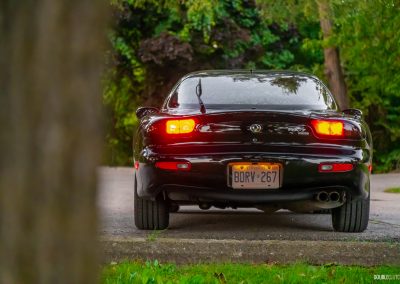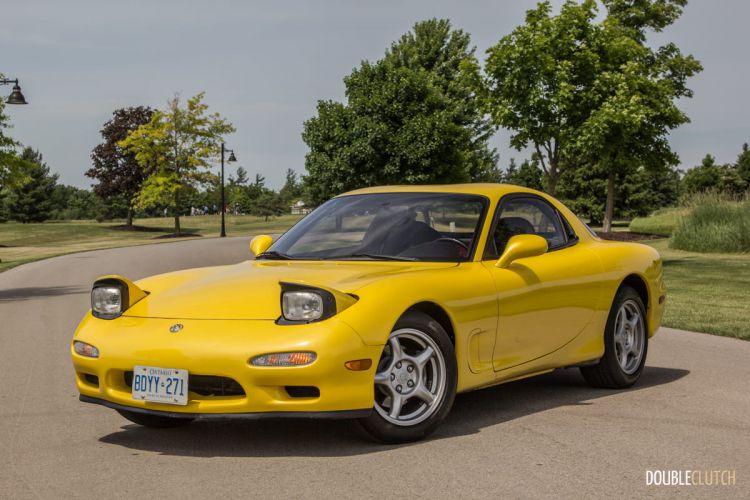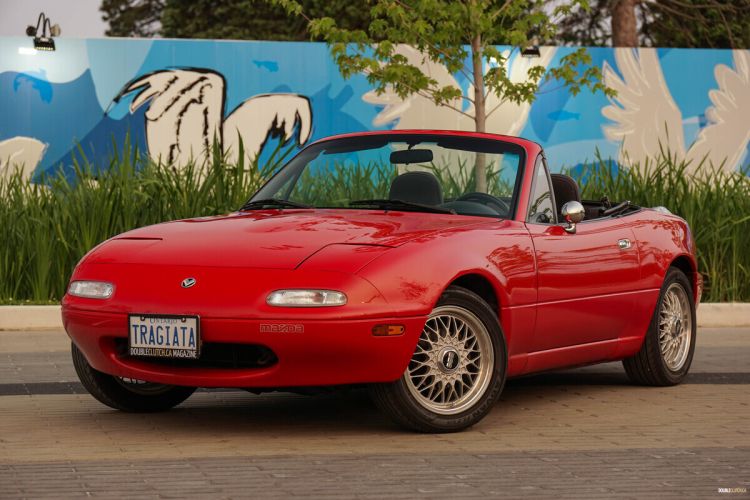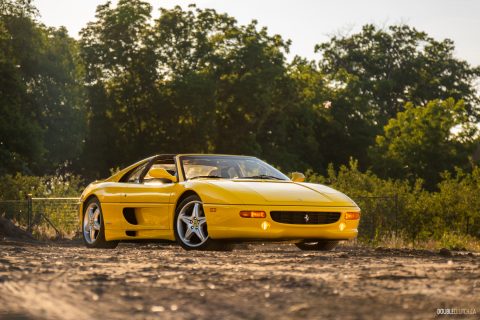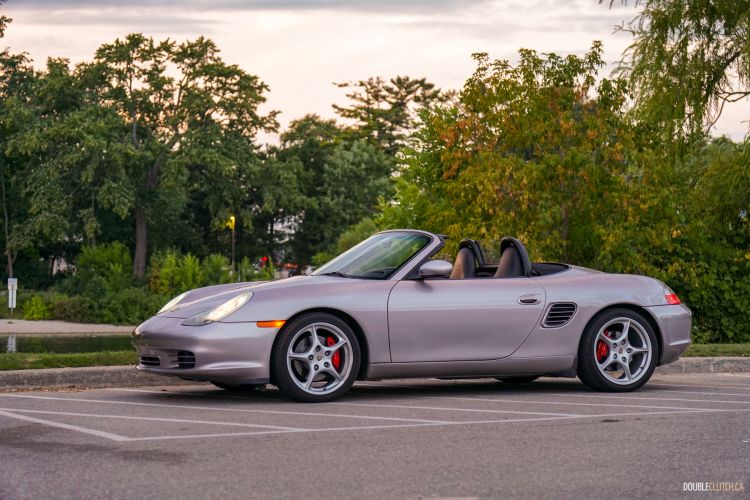I was worried I wasn’t going to like this 1993 Mazda RX-7. My first impression was that it was dull. Too refined for its own good.
When we think of Mazdas, we think of cars like the Miata. It’s a plucky little car that’s a shameless homage to fun, to a sense of connectedness. This character bled through to their more pedestrian cars too, like the Protege—which became the 3, and have always been lauded for being entertaining, cheap, and cheerful transportation.
This is not that car. This came from a very different side of Mazda. The third-generation RX-7, also known as the FD, wasn’t built to have fun. It was built to be the best. This was a serious side of Mazda that was trying very hard to impress upon the world that they could build a world-class sports car. This was from a Mazda that had ambitions to start their own luxury brand and build a V12-powered luxury car, like Mercedes-Benz was doing. This was from a Mazda that took their novel rotary engine design to Le Mans in 1991 and won—so divisively that it got banned.
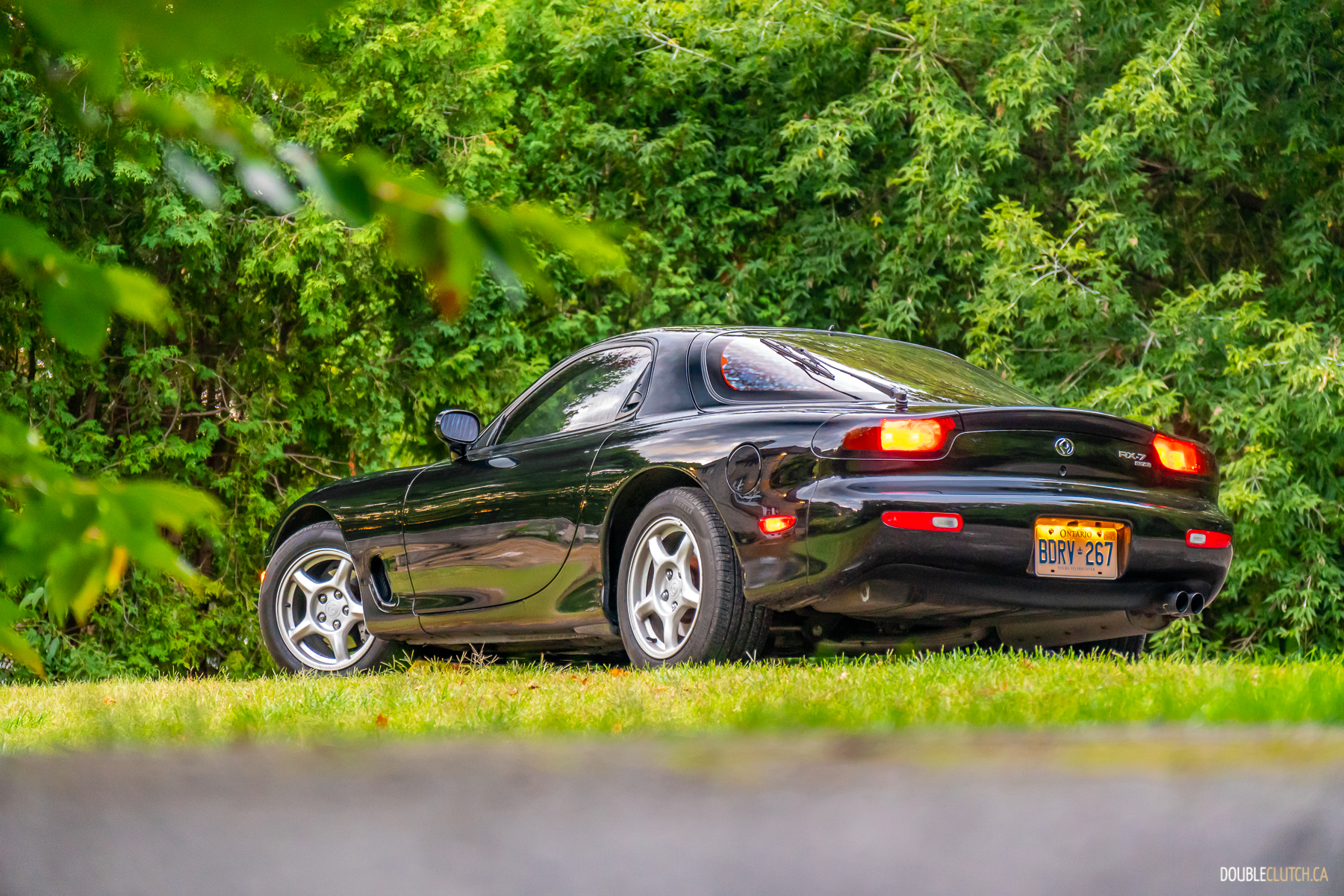
This RX-7 stickered for $46,545 when it was new, which works out to nearly 90-grand now. This was not cheap and cheerful. This was one of the best damn sports cars on the planet—and I was disappointed with it. Initially.
Don’t get me wrong, when I first walked up to this particular car, I spent a solid 10 minutes basking in it and drinking in its timeless style. The RX-7 is simultaneously unassuming because it’s so surprisingly small, yet also intimidatingly pretty to the point where you don’t feel like you’re good enough to walk up to it. From the long sculpted hood to the flowing canopy; from the factory smoked rear light bar to what is inarguably the sexiest door seam ever cut into a car, this RX-7 looks every bit like the legend people think it is, and it does so in a wonderfully understated way.
Opening the pillar-mounted door handle reveals a lavishly equipped (for its era) two-tone black-and-lipstick-red interior, which is almost as much of a delight that’s the sheet metal wrapped around it. It’s very driver-centric, with a centre console line that works its way up around the instrument cluster and back down into the door, creating a wraparound effect not entirely dissimilar to the Porsche 928. Everything is trimmed in either a soft leather or leatherette material, extending to the doors, across the dash, and even up to the headliner. It doesn’t feel like a cheap-and-cheerful NA Miata; it feels like a $90,000 sports car.
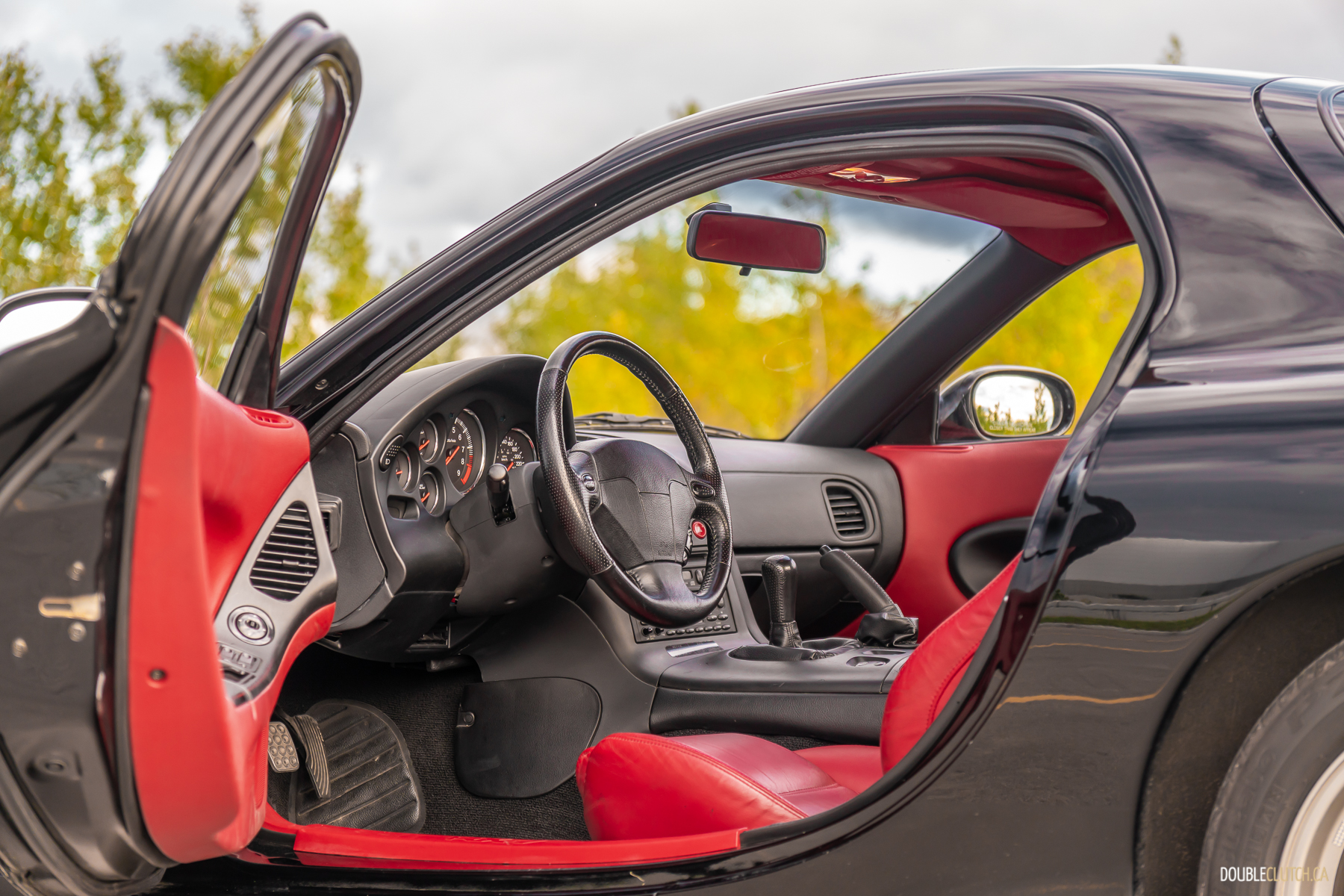
A twist of the key brings the RX-7’s 1.3-litre twin-turbocharged rotary engine to life with a quick yawn that settles into a quiet murmur. The clutch and shifter are both a touch on the stiff side in a modern context, but are both easy to read. Feeding in some throttle and setting off in the RX-7 reveals a car that is, by careful design befitting of a $90,000 car, almost completely unremarkable.
It’s relatively quiet, rides fairly well, visibility is great, the steering is fairly light, and the engine totally defies the rambunctious, rev-happy reputation it developed over the years. It’s doubly-hushed both from the turbocharger setup on the intake side and the heavily insulated muffler on the exhaust side, as was the style at the time. The RX-7 doesn’t need to be wrung out to get power out of it; Mazda’s sequential twin-turbo setup, for all its complexity and the headaches that followed, works incredibly well. The tiny little engine feels as mighty and effortless as any other sports car of its era, which when combined with how quiet it is and how inherently smooth rotary engines are, makes it all feel pretty uneventful.
I picked up this RX-7 in the busy east end of Toronto, during rush hour on a Friday. I spent my first couple hours with the car trying to get out of town, finding somewhere to get some photos of it, trundling in stop-and-go traffic almost the entire time. I eventually gave up after it started pouring rain for the third time and went home in the dark. Unlike something like, say, my own Miata, which can make light out of any situation, the RX-7 felt just as annoyed as I did.
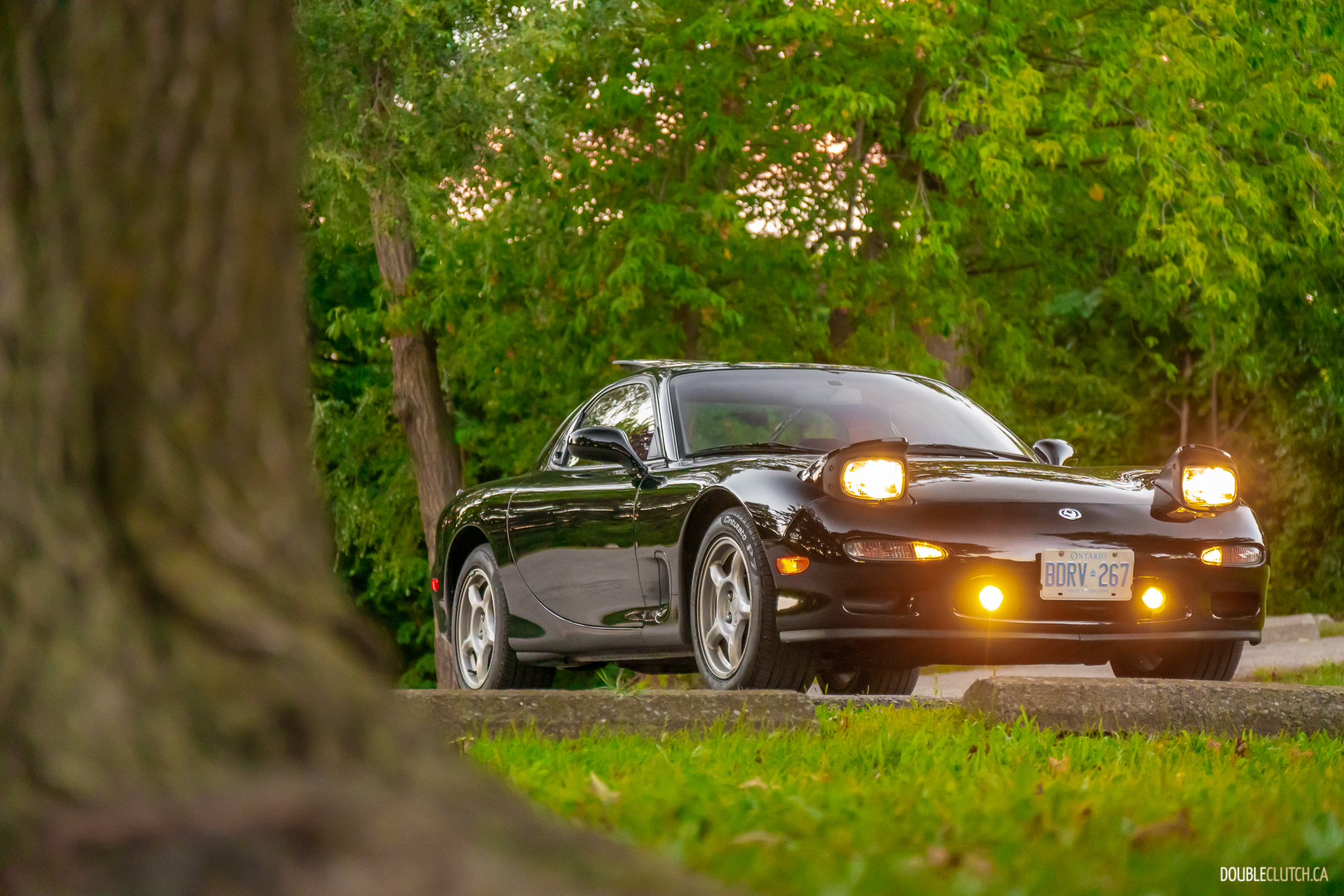
I’m used to golden retriever energy in a Mazda, but this is a different breed. The RX-7 a greyhound; it needs to run, and when you take the leash off, it still doesn’t feel fast. Like a greyhound, it takes off and runs away with so little drama that it’s hard to conceive until you look down to the speedometer and see the pace that’s happening. Its five-speed manual transmission is fed through a fairly tall rear gear ratio, so you’re not banging through gears on the regular, reducing the dramatic effect further still.
The long gearing is chosen to keep the unique turbo system spooled up and feeding a steady supply of boost to the ferocious little engine, and it is relentless all the way up to its 7,500 rpm redline. At full song, the much-maligned sequential turbo setup is imperceptible, where after it takes a beat to gather its breath, it’s gone. It doesn’t sound like a lot now, but with 255 horsepower and only 2,800 pounds to move, this RX-7 is fast. What Mazda achieved with this engine is nothing short of remarkable. The way they were able to make something so tiny feel so mighty—so much so that whether the RX-7 deserves to be on the same echelon as the Corvette, 911, and NSX wasn’t even a question—is an honest-to-God feat of engineering.
But the real magic is in the chassis.
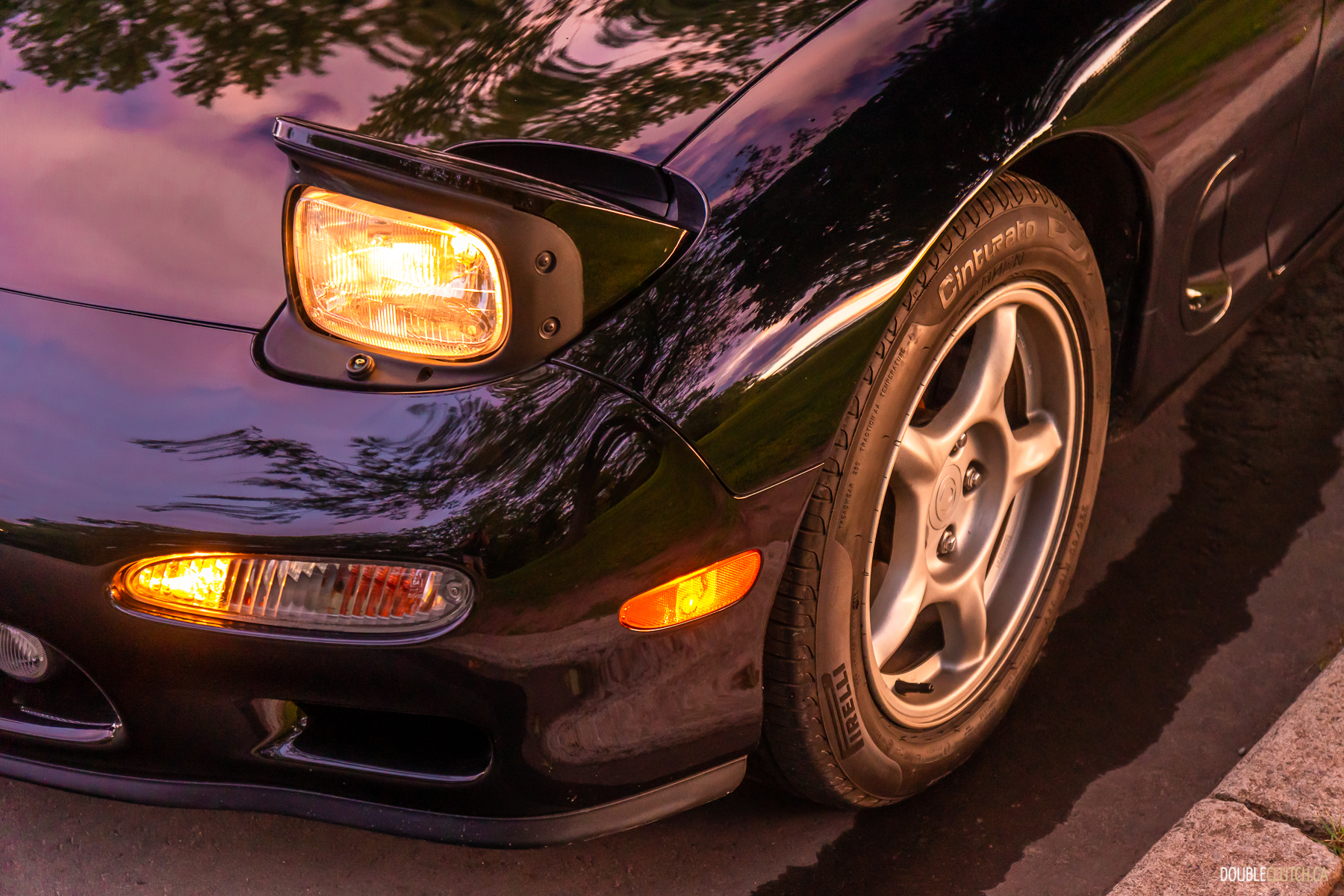
This car was touted as one of best handling cars in the world when it was new. It still is. The same compliant ride and sedate steering that almost felt sleepy around town completely transformed once there’s some speed under them. The steering is light, tight, direct, and so talkative as to almost be off-putting if you’re not used to conversation. The front end is dialed to turn in tenaciously; mid-corner balance is dead-on perfect neutral, with a moderate degree of under- or oversteer to be finely tuned in via your right foot. The way the RX-7 works through a corner is like very, very few cars I’ve ever driven. It’s reassuring and eager, with just enough degree of edginess baked in to feel like a serious instrument.
All of the other Mazda hallmarks that you would expect to be great are great. The brakes are firm and linear, it’s easy to heel and toe, the shifter is short and tight with clearly defined gates, and throttle response is remarkably crisp for a car that is so dependent on force-fed air. The driving position is generally pretty good, but the lack of a tilt-and-telescoping steering wheel can make life a little tricky for lanky folk like myself—but not to a problematic degree. I imagine Mazda just had a very specific idea of how a pilot should be positioned in the RX-7, and as with the literal, entire rest of the car, maybe they were onto something.
This 1993 Mazda RX7 is not from a version of Mazda we might recognize today, but that doesn’t mean they weren’t on to something really interesting. I love that we are starting to see some of that ambition sneak back into their products—like the double wishbone, rear-drive architecture powered by a brand-new straight-six engine in the CX-90. If that’s the direction that Mazda wants to go; if they want to push themselves back onto the forefront of the world stage like they did decades ago, I’m so here for it. It may not be what I expected, but the FD-generation RX-7 is without a doubt one of the best cars I have ever driven, deserving every bit of legendary status it enjoys today.

